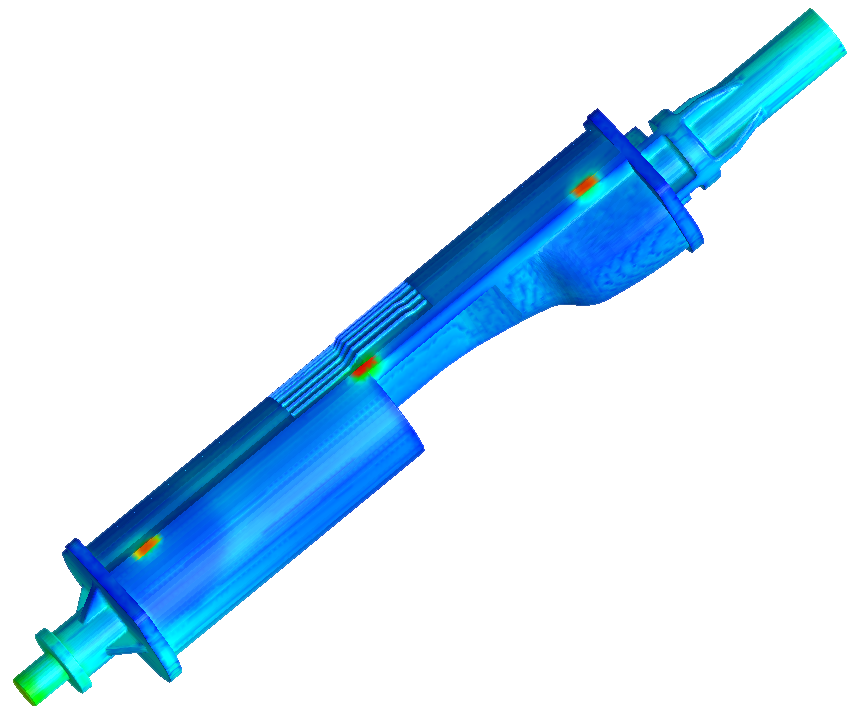Absolute precision and the best quality - this is Leonhardt’s company philosophy. Especially exceptional is the product range and the processing technologies used. Whether filigree components made of glass, ceramic or carbide, tools for plastic, ceramic or metal injection molding, prototypes, small series or complete tool systems, Leonhardt takes on every challenge and realizes them successfully. In doing so, highly qualified manual work is combined innovatively and future-oriented with state-of-the-art technologies and computer-aided procedures. Leonhardt is one of the most sought-after specialists, especially in the processing of high-performance ceramics. With skill, experience and a great deal of sensitivity, complex components developed from the in-house ceramics are ready for series production.
Leonhardt relies on Moldex3D, the world's leading software in the field of plastic injection molding. The product is mainly used in the field of ceramics (CIM).
This case study shows a ceramic component used in the automotive industry. At the end of the rotating shaft a headlight is mounted. Originally this was made of metal. The considerable heat development caused a strong deformation of the shaft and quickly turned it into a wear part. Due to the excellent mechanical properties of the ceramic materials, the idea was born to produce the aluminum oxide shaft. Particular challenges in the implementation were high and homogeneous density ratios in the component as well as a sprue, which allows an injection molding process at the lowest possible pressure.
The lower pressure requirement was realized by using a relatively wide and thick runner:
With the help of Moldex3D it was reviewed whether the selected runner fulfills the expected mechanical properties - homogenous structure, impermeability of the component - and if the selected injection molding process can be realized. Information from the simulation, such as flow front times were evaluated or the temperature curve of the filling phase. The heat centers at the injection points are very clearly visible. Information about the temperature distribution inside the ceramic component at the end of the filling process is provided by a cross-sectional view. The goal is a homogeneous temperature distribution.
The pressure distribution at the end of packing and the clamping force over the entire process time allowed important conclusions about the manufacturability. At the end of packing, small areas of increased volumetric shrinkage appear at both ends of the ceramic component:
Information about the temperature distribution at the end of the cooling phase was also helpful to evaluate and verify the injection molding process. With the help of Moldex3D both requirements could be achieved - high density ratios in the shaft and use of as little pressure as possible.Leonhardt relies on Moldex3D, the world's leading software in the field of plastic injection molding. The product is mainly used in the field of ceramics (CIM).
This case study shows a ceramic component used in the automotive industry. At the end of the rotating shaft a headlight is mounted. Originally this was made of metal. The considerable heat development caused a strong deformation of the shaft and quickly turned it into a wear part. Due to the excellent mechanical properties of the ceramic materials, the idea was born to produce the aluminum oxide shaft. Particular challenges in the implementation were high and homogeneous density ratios in the component as well as a sprue, which allows an injection molding process at the lowest possible pressure.
The lower pressure requirement was realized by using a relatively wide and thick runner:
With the help of Moldex3D it was reviewed whether the selected runner fulfills the expected mechanical properties - homogenous structure, impermeability of the component - and if the selected injection molding process can be realized. Information from the simulation, such as flow front times were evaluated or the temperature curve of the filling phase. The heat centers at the injection points are very clearly visible. Information about the temperature distribution inside the ceramic component at the end of the filling process is provided by a cross-sectional view. The goal is a homogeneous temperature distribution.
The pressure distribution at the end of packing and the clamping force over the entire process time allowed important conclusions about the manufacturability. At the end of packing, small areas of increased volumetric shrinkage appear at both ends of the ceramic component:

